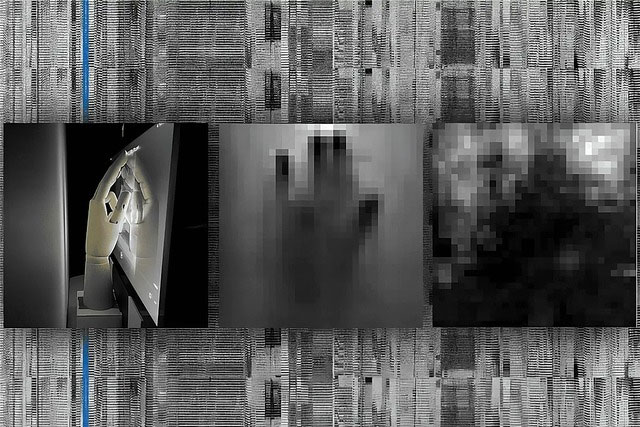Even if you cover your webcam, hackers can still spy on you as usual
Ambient light sensors in smartphones may pose unwanted privacy risks.
In George Orwell's novel "1984" , TV screens are everywhere, which is also said to be the epitome of privacy invasion. In this fictional novel, TV screens are installed in people's homes and throughout public spaces, serving as both propaganda machines and unblinking sentinels of the state. Even though there are no cameras, the TV screen can still monitor everyone.
Now, a new study by MIT researchers shows that this is not such a far-fetched idea. Scientists have come up with a method that allows them to hack ambient light sensors , which are microscopic components designed to adjust the brightness of your screen, to serve as a viewing window. into our private lives. This is the first time anyone has shown that these sensors can essentially turn into a second camera.

A light sensor is a photoelectric device that converts detected light energy (photons) into electrical energy (electrons). It comes in many different types, used in different applications.
A disguised hidden camera
At first glance, the ambient light sensor seems harmless. They measure the brightness around you, automatically brighten your picture in sunlight, or brighten the screen to a darker setting for an optimal viewing experience. However, researchers at MIT's Computer Science and Artificial Intelligence Laboratory (CSAIL) have discovered that these sensors can capture images of what is happening in front of them without no need for a camera. It's a major privacy risk that has gone unnoticed until now.
Unlike apps that ask for permission to use the camera, these sensors work without asking, silently collecting data.
Lead author Yang Liu, a doctoral student in MIT's Department of Electrical Engineering and Computer Science and a CSAIL affiliate, said in a press release: "Many people believe that these sensors must always enabled".
"But like TV screens, ambient light sensors can passively record what we are doing without our permission, while apps are required to request permission access to our cameras. Our tests show that when combined with displays , these sensors can pose some visual privacy threats by providing give that information to hackers spying on your smart device."

On phones, the light sensor is responsible for automatically controlling the screen brightness for the device. When you receive a call and put the phone to your ear to listen, the smartphone screen will turn off automatically and this is thanks to the light sensor.
How ambient light hacks work
This process is complex but also extremely skillful. The ambient light sensor picks up subtle changes in light intensity caused by movement and interaction with the screen. When you touch your device's touch surface to interact with a page or enter private data, light is blocked by your hand and reflected to your face.
Using a complex algorithm, the researchers were able to map these variations into two-dimensional space, essentially reconstructing a pixelated image of the activity in front of the screen. The resulting images aren't as sharp as those taken with traditional cameras, but they still mark an invasion of privacy that can be used in a variety of nefarious ways.
In the tests, the MIT team of scientists used Android tablets to conduct three experiments, from mannequins interacting with the device to capturing the nuances of hand movements human. These tests show that gestures like swiping, scrolling and tapping can be monitored, turning every touch into a potential data point for hackers.
Researchers accordingly also propose some measures to protect our privacy. They proposed tightening app permissions for ambient light sensors and reducing sensor accuracy and speed, making it more difficult for unwanted observers to capture detailed information. Changing the light sensor may reduce performance but consumers will have more peace of mind.
Additionally, repositioning the sensors on the device can prevent them from directly facing the user. In the vast majority of devices such as smartphones or laptops or tablets, the light sensor is located right next to the camera.
While the idea of a computer screen monitoring our every move may sound like science fiction, the reality is that technology is evolving in ways that continually challenge our perception of privacy. private. It's a reminder that even the basic technological features of our devices can be altered for surveillance.
These findings appear in the journal Science Advances .
- Sophos alert for victims' webcam Trojans
- Why do hackers like to wear hooded shirts, sitting in the dark?
- Can hackers bounce signals around the world?
- Choose a popular webcam
- Turn your webcam into a video camera
- Remote observation by webcam
- Active WebCam: multipurpose utility for webcams
- 25% of US hackers work for the FBI
- The world of thieves
- Power socket cover with integrated light sensor
- Why are manhole covers designed circularly?
- Dead people incarnate in green trees thanks to egg coffins
 What is the Snapdragon SiP chip?
What is the Snapdragon SiP chip? How to create a yellow circle around the mouse cursor on Windows
How to create a yellow circle around the mouse cursor on Windows Edit the Boot.ini file in Windows XP
Edit the Boot.ini file in Windows XP 3 ways to restart the remote computer via the Internet
3 ways to restart the remote computer via the Internet